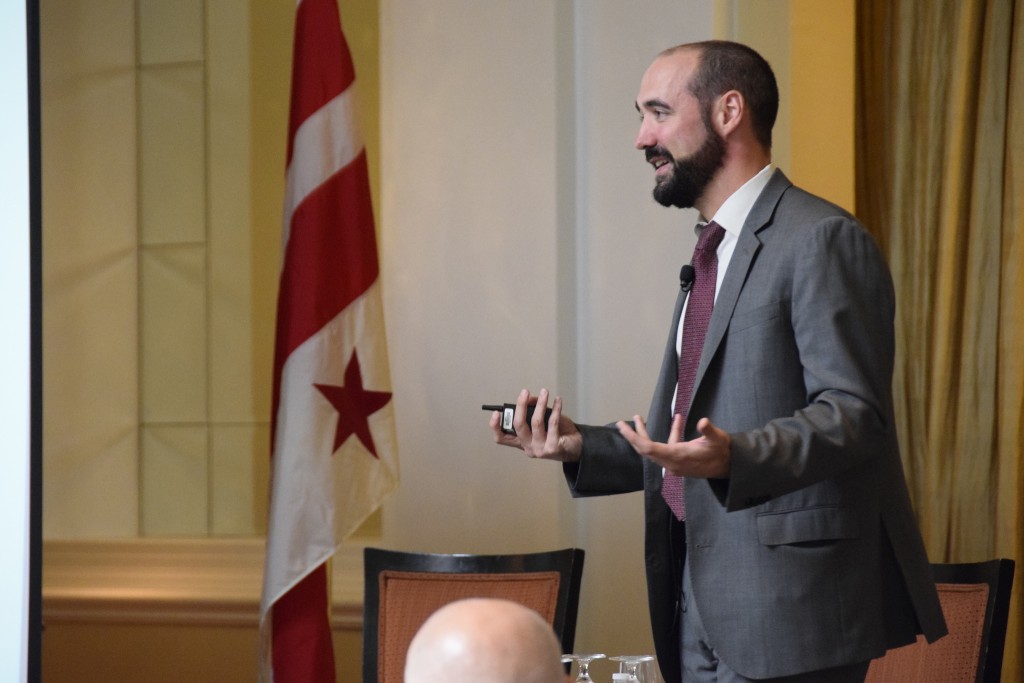Singer-songwriter and actor Tom Waits once said, “We are buried beneath the weight of information, which is being confused with knowledge.” This is particularly relevant for discussions regarding open data. Open data has the potential to do great things and some advocates call for the publication of all available data – a “You got it? Let’s see it” mentality.
But on the other hand, Dan Hoffman, Chief Innovation Officer of Montgomery County, MD, stresses quality over quantity. At GovLoop’s Tuesday event, Innovations That Matter: How To Optimize Your Open Data, Hoffman argued in his keynote that instead of just releasing enormous swaths of data, it is more important 1. to build a sustainable community of open data and 2. to prioritize the needs of the citizens where government can have the greatest impact.
In creating a sustainable open data community, funding is important, but Hoffman put more emphasis on a strong backing from executive leadership, support from open data legislation, and guidance from external expert organizations. These factors help establish an infrastructure that fosters the long-term promotion of open data. Furthermore, hosting food data jams, hackathons, and datapaloozas helps build and broaden a strong civic community that not only supports, but expects, open data. And outreach shouldn’t just be to the “usual suspects,” as Hoffman phrased them, but instead to new demographics such as high school students.
Outreach strategies lead to Hoffman’s other point: getting feedback about what data should be published. Government workers should ask themselves, “What is important to the public?” He strongly recommended avoiding questions about what type of data or data set the public wants, but instead how they will use it. Ask questions like, “What would you like to do that you can’t currently do or is very difficult to do?”
To this end, Montgomery County has open data town halls where citizens talk to different public departments such as police, fire, and social services. From these events, Hoffman gathers what data people want access to in order to prioritize goals, especially with limited resources at hand. It is important to “create a pipeline that is reflective of citizens and the public departments that serve them,” Hoffman said. Additionally, he needs to be able to explain to public officials why one data set is published before or instead of another. To elucidate and attempt to make apples to apples comparisons, Hoffman created a scorecard.
Questions that a public agency must ask internally to help prioritize a dataset are as follows:
1. Is data aligned with the core function of the department?
2. Do we use this data to measure performance?
3. Will this data save us administrative time?
4. Is data easily accessible?
5. Will this data help foster collaboration across depts.?
6. Will this data allow us to retire a legacy system?
External questions, focusing primarily on the public, these questions can prioritize:
1. Is this data typically used to decide policy?
2. Will this data make life easier for a resident or business?
3. Are we the only source of this data?
4. Will this data contribute to civic engagement?
5. Will this data create economic opportunity?
6. Will this data improve public knowledge of the function of a department?
By laying this groundwork, Montgomery County has developed a prioritized inventory with 550+ datasets; has a government full of open data champions; and has broad public support and buy-in. An important thing to remember, however, is that this does not happen overnight. Hoffman joked that hosting one hackathon or town hall is going to result in your local government having Yelp-like capabilities. But by establishing the sustainability and prioritization of open data in your community, you may see the benefits quicker than you’d expect.
You can download Hoffman’s presentation here.
See all the recaps of GovLoop’s recent Open Data training event:
